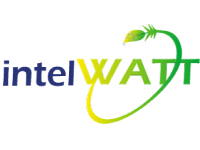CONCEPT & METHODOLOGY
THE CONCEPT
intelWATT’s starting point results from the convergence of preliminary research outcomes carried out by both the RTOs and industrial partners. For this purpose, following key technologies have been identified to have a strong potential for boosting fresh water preservation in energy intensive processes: The consortium aims to improve the state of the art in these technologies in order to bring the technology up to the level of demonstration on real environments (TRL7-8). The project methodology is structured in three main phases.
KEY TECHNOLOGIES
![49137-[Convertito]](https://www.intelwatt.eu/wp-content/uploads/2020/12/49137-Convertito.png)
Water process streams
This phase includes the detailed characterization of the selected applications water process streams, as well as the requirements determination of all basic process components for instance smart sensors, communication protocols, membrane and resin performance, energy requirement, general and safety related specifications of the prototypes etc., in order to investigate possible meddling aiming at water reuse increase and potential recovery of valuable substances and energy generation.
Customization of membranes
This phase includes the customization of membranes, modules and resins to be evaluated at lab scale. The preparation of experimental setups for the different unit operations involved in intelWATT at laboratory scale and the incorporation the smart monitoring.
Design, construction, commissioning and operation
This phase includes the design, construction, commissioning and operation of three TRL7-8 prototypes – a CTBD treatment system, a HRRO/IX combination and a hybrid RED/MD/MCr pilot unit – that will be located at the premises of PPC, BIA and ACSA respectively. Extensive demonstration activities will take place in order to evaluate the performance of the proposed technologies at operational environment as well as to optimize the processes’ conditions.
METHODOLOGY
Water environmental monitoring is an important key to control and take care of human life and environment health. Continuously increasing contamination levels are detected in water bodies due to fertilizers, heavy metals, pesticides, etc It is necessary that water monitoring instruments become within the reach of local authorities and control units, in order to increase the amount of data available on water pollution and facilitate sharing. The greatest limitation of detection devices on the market today is that they are limited to the measurement phase, while the operator still carries the burden of preparing the sample for reading.

